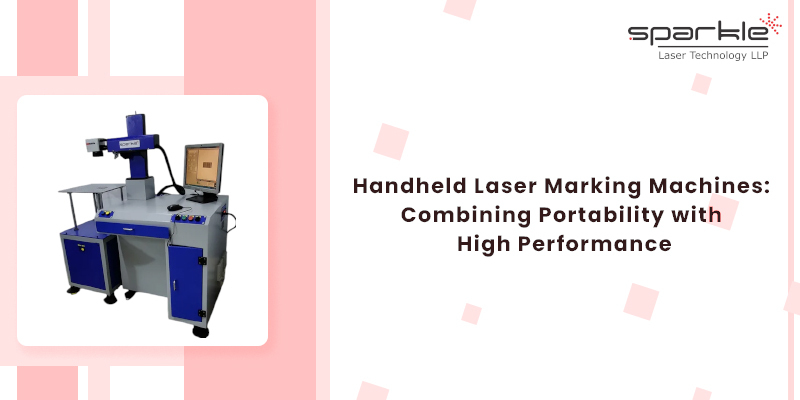Handheld Laser Marking Machines: Combining Portability with High Performance

Today’s manufacturing and industrial landscape demands efficiency, precision, and portability ultimately enabling ivity and quality. One of the biggest developments in this realm is the handheld laser marking machine a device that marries laser marking technology with the convenience of a portable piece of equipment. With the ability to mark, etch, and code s in virtually any orientation without loss of performance, these machines are changing how industries think about marking.
What are handheld laser marking machines ?
Laser Marking handheld devices use laser beams to make markings on metals, plastics, ceramics, or other materials. These machines give operators the ability to maneuver the system around the workpiece (kinda like a snake) unlike conventional large, stationary laser systems which tend to be more suited to jobs that don't require such a high volume of mobility and versatility.
Falcon handheld Laser Marking machines have a variety of lasers (Fiber, CO2, or Diode) that produce permanent, precise, and very readable markings on s or components. This marking can consist of logos, serial numbers, barcodes, QR codes, or complex designs or patterns.
Advantages of Handheld Laser Marking Machines :
Portability and Flexibility :
The portability of handheld laser marking machines is one of their most considerable advantages. Traditional industrial laser markers tend to be bulky, requiring a specialized work environment, and relatively immobile. Hand-held machines are lightweight, well-balanced, and portable, providing amazing flexibility—useful for small jobs even in the field (on-site marking).
Firearm markers can be so big and sometimes very difficult to carry around without separating themselves — you’ll be all set in a workshop or tight, contrived situations at a combat point. This Mobile nature gives businesses the freedom to mark parts and components right where they are and avoid the need to move parts to and from ion.
High-Precision Marking :
The high precision and accuracy that come with larger models remain intact in the relatively small portable laser marking machine. Laser Beam is focused into a small dot for detailed designs, fine text, etc., and can also mark complex shapes or curves on the material. Whether you’re marking tiny serial numbers on medical equipment or etching full-blown logos on automotive components, the results are sharp, crisp, and super durable.
Cost-Effectiveness :
Portable laser makers are usually cheaper than industrial-grade ones. It saves businesses the initial investment and operational costs as well. Long-term operating costs are lowered since these machines are low-maintenance, energy-efficient, and do not require consumables such as ink or solvents.
Ease of Use :
Handy compact laser marking machines are easy to operate and built for simple operation. Most models feature intuitive interfaces, enabling operators to rapidly configure the system, enter marking specifics, and initiate the process all with minimal training. Treadmills are robust, easy to use, and therefore ideally suitable for a large number of applications as even inexperienced workers can operate them with a minimum of effort.
Versatile Applications :
From manufacturing and retail to automotive and aerospace industries, handheld laser marking machines find their application. They can mark metals — steel, aluminum and titanium — as well as nonmetals, including plastics, ceramics and glass. Handheld systems are versatile tools, suitable for many applications including Project types and power levelsDifferent laser types are suitable for different strengths.
-
Identification of s: Labeling serial numbers, batch numbers, or codes.
-
Customization: Adding a personal touch with names, logos, or unique designs.
-
Industrial Marking: Printing barcodes, QR codes, or part numbers for traceability and inventory management
-
Surface Treatments: Engraving or etching surfaces to improve durability, resistance, or aesthetics.
Minimal Environmental Impact :
Laser dart is also less hazardous as compared to conventional marking techniques. Because laser marking does not involve inks, solvents, or other chemicals that can cause pollution, it is a clean, sustainable solution for businesses looking to lower their environmental impact. And since no consumables are used, there is less waste generated, which also aids in reducing environmental impact.
How to Choose the Right Hand-held Laser Marking Machine :
Read on for key elements to consider when purchasing portable laser marking machine.
Laser Type: Fiber lasers are the conventional type for marking metals while CO2 lasers can engrave most non-metals, including plastics and wood. Select the laser type according to the materials you will be using.
Power and Speed: You’ll want to ensure the laser’s power and speed line up with your ion needs, depending on the intricacy of the marking. More and higher wattage lasers will facilitate rapid processing.
Ergonomics: Comfort is a key consideration if the machinist will be using the machine for long periods. Ideal designs are lightweight, balanced, and have adjustable handles.
Software Compatibility: Verify that the machine is compatible with the design software you use to make the marks, whether CAD, CAM, or other graphic design programs.
Conclusion :
For manufacturing, industrial, and customization sectors, the handheld laser marking machines replace the previous traditional solution with their durable and sophisticated design. This portability, alongside their ability to give high-precision results, makes them priceless assets for companies after flexibility, efficient processes, and quality.
Whether you need to engrave a complex design, apply a barcode, or personalize s, these machines provide a compact and cost-effective solution that caters to the needs of many industries today.